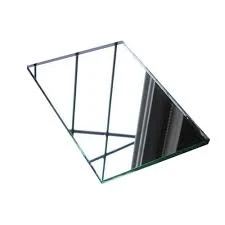

The Advantages of Low-E Glass Surface Coating
In today’s rapidly evolving architectural landscape, energy efficiency has become a paramount consideration for both residential and commercial buildings. One innovative solution that has gained considerable attention is low-emissivity (Low-E) glass. This specialized type of glass is coated with a microscopically thin layer of metal or metallic oxide, which significantly enhances its insulation properties and addresses various environmental challenges.
Understanding Low-E Glass
Low-E glass is primarily designed to reflect infrared light while allowing visible light to pass through. This unique property is achieved through the application of a low-emissivity coating on one or more of its surfaces. The coating reduces the amount of heat transfer that occurs through the glass, making it an excellent choice for energy-conscious building projects.
By limiting the amount of heat entering or escaping a building, Low-E glass contributes to temperature regulation throughout the year. In the summer months, it helps keep indoor spaces cool by reflecting heat away from the interior. Conversely, during winter, Low-E glass minimizes heat loss by reflecting warmth back into the building. This dual functionality not only enhances comfort but also reduces reliance on heating and cooling systems, leading to lower energy bills and a smaller carbon footprint.
Energy Efficiency and Environmental Impact
One of the most significant advantages of Low-E glass surface coating is its contribution to energy efficiency. Buildings are responsible for a substantial portion of global energy consumption, and by incorporating Low-E glass, property owners can substantially reduce their overall energy use. According to the U.S. Department of Energy, using Low-E glass can save up to 30% to 50% in energy costs compared to conventional glazing options.

From an environmental standpoint, the use of Low-E glass aligns with sustainable building practices. As energy efficiency improves, greenhouse gas emissions decrease. This is particularly vital in the context of climate change, where reducing energy consumption is a key goal. Furthermore, many Low-E glass products are manufactured using environmentally friendly processes, reinforcing their status as an eco-conscious choice.
Enhanced Comfort and Aesthetic Appeal
In addition to energy savings, Low-E glass improves indoor comfort by maintaining consistent temperatures throughout a building. It reduces the occurrence of hot spots near windows and prevents condensation, which can lead to mold and mildew growth. This improved indoor air quality is essential for the health and well-being of occupants.
Moreover, Low-E coatings are virtually undetectable, meaning they do not compromise the aesthetic appeal of the glass. This allows architects and designers to fully realize their creative visions while ensuring that buildings are energy-efficient. Available in a range of styles, Low-E glass can complement various architectural designs without altering the overall look of a space.
Future Outlook
As the demand for energy-efficient building materials continues to rise, the future of Low-E glass surface coating looks promising. Advances in technology are leading to the development of even more effective coatings that enhance performance while decreasing production costs. Additionally, as sustainability becomes a more significant focus in policy-making, the integration of Low-E glass in building codes and standards is likely to increase.
In conclusion, Low-E glass surface coating presents a multitude of benefits that extend beyond mere aesthetics. Its capacity to enhance energy efficiency, reduce environmental impact, improve indoor comfort, and maintain architectural integrity positions it as a critical component in modern building design. As we continue to seek solutions for a sustainable future, Low-E glass will undoubtedly play a vital role in shaping the built environment for generations to come. Whether for a new construction project or a retrofit, the advantages of Low-E glass make it an intelligent choice for any forward-thinking builder or homeowner.